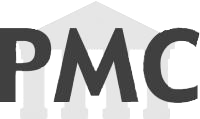
Case Report
En bloc resection of a C2–C3 upper cervical chordoma: Technical note
Alexander G. Weil, Mohammed Shehadeh, Tareck Ayad, Olivier Abboud, Daniel Shedid
Published:
November 25, 2015
DOI:
10.4103/2152-7806.170450
License:
Copyright: © 2015 Surgical Neurology International2015This is an open access article distributed under the terms of the Creative Commons Attribution-NonCommercial-ShareAlike 3.0 License, which allows others to remix, tweak, and build upon the work non-commercially, as long as the author is credited and the new creations are licensed under the identical terms.
Abstract
Background:Recently, en bloc spondylectomy for upper cervical chordomas has been reported. Most authors utilize the combined approaches (e.g., transoral tumor resection with anterior column reconstruction and primary pharyngeal closure without up-front flap repair). However, the 60% incidence of posterior pharyngeal wall dehiscence delays oral intake, typically requires an additional surgery (e.g. free-flap), and delays radiation therapy.Methods:Here, we demonstrate the efficacy of en bloc C2–C3 spondylectomy for the treatment of upper cervical chordomas utilizing a combined transoral followed by posterior approach. We used a novel anterior de-epithelialized submental island flap (SIF) as an underlay graft between the pharyngeal wall and cage/hardware to prevent pharyngeal wound dehiscence.Results:Despite a small pharyngeal fistula, the construct healed and the patient was disease-free 40 months later.Conclusion:En bloc C2–C3 spondylectomy for the treatment of an upper cervical chordoma typically requires a combined transoral and posterior approaches. This required utilization of an anterior SIF to promote adequate wound healing. This maneuver avoided incurring the typical complications of combined approaches (e.g. transoral tumor resection with anterior column reconstruction and primary pharyngeal closure without up-front flap repair).


